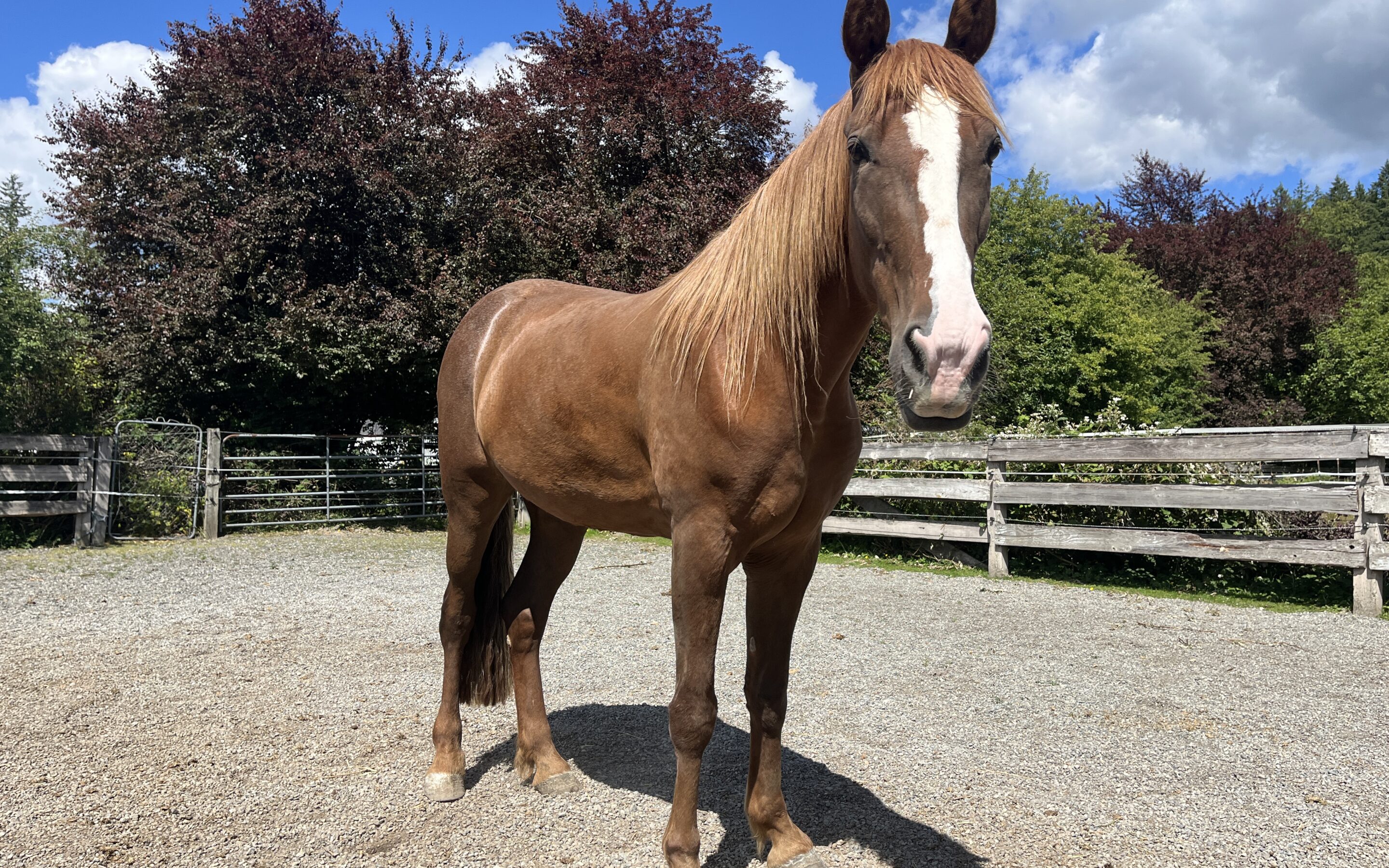We have no shortage of chestnut mares at SAFE. It’s our most popular color, in fact, with no fewer than 10 in our care currently. Deja Vu is aptly named, then, being a chestnut mare herself. Walking by her paddock, you may ask yourself, ‘have I seen this horse before?’ But after spending a bit of time with her, you’d come to the realization that she, like all the rest, is an individual, not to be referred to as ‘just another chestnut mare.’
Deja, as has become her moniker, is a wary, but intelligent gal. While she arrived able to be haltered and handled, one quickly came to the realization that she was doing so in spite of you, not because of you. So recently we have been working on getting her to hook on to a person instead of tuning them out, helping her be an active participant in what is happening versus merely allowing things to happen to her. This is demonstrated in something as simple as going in to catch her. Yes, she will allow you to walk up and put a halter on – if you approach with some caution and finesse – but it is clear from the way she looks towards her horse neighbor or the surrounding environment that she is not at all with you. If you are to raise the energy, she scrambles away, and tunes out your bids to restore a connection that wasn’t there to begin with. She does not yet find peace in humans, despite how she might have originally appeared by being halterable and ‘gentle.’
So each time we go to catch her now, instead of sneaking a catch on her, so to speak, we ask her to hook on to us. At this stage, this looks like a little bit of work. We send Deja around the paddock, sending energy towards her hip in order to encourage her to face us. Once she does, she gets a break as long as she is standing facing us with her attention also pointed in our direction. If that attention breaks or if she feels the need to move off, totally fine, but back to work she goes. The first time we did this, Deja felt the need to scramble around the paddock, changing direction on a whim, and feeling like she was only able to stop in a way where she could have eyes on her friend. But she is a smart mare, and was soon realizing that the answer we were looking for was one that involved looking for us. Soon, she was seeking out opportunities to find us, and by extension, the release.
It’s important to work both the right and left sides of a horse, and it is also fascinating to see how the two differ. Most horses are handled more on the left side (being the side they are haltered and led from in the majority of cases), and while you may think that this might be their ‘better’ side, the opposite can also be true. Sometimes, they have learned more negative habits or tendencies on the left due to poor handling, meaning that the right side is actually the side where they are softer and more pliable. But, it can also mean that they are more comfortable with people on that left side, so even if the right side is ‘better,’ they may want to keep you on the left eye where they are more used to seeing you. Deja is definitely less brace‑y on her right side, but does have a tendency to want to get you back on the left eye.
Each time we go to catch Deja in this new way, the time it takes for her to hook on grows shorter and shorter. She has even begun to take a few steps towards us when she draws in, showing that she is choosing the connection rather than having it foisted upon her.
Just because a horse has been haltered before does not mean it has been done with quality, and also does not mean that we will write them off as being ‘done already.’ We may have to work to undo what has already been done in Deja Vu’s halter starting, but helping to rebuild this foundation will have a massive impact on the quality of communication she is able to have with humans for the remainder of her life. Besides, we may have done this a time or two before – the real Deja Vu!


